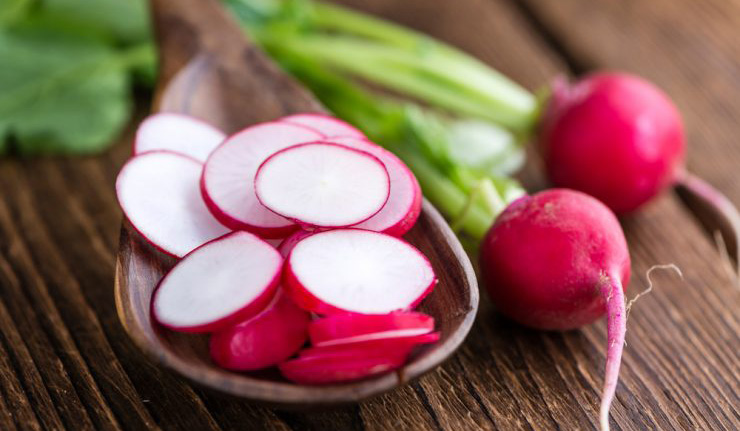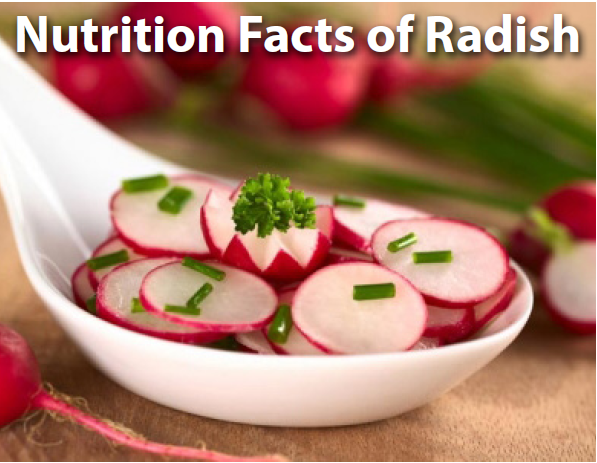Nutrition Facts of Radish
Radishes are crunchy veggies packed with cancer-fighting properties, immuneboosting potential, and peppery flavor, to boot.
With their small size and bright pink-red hue, radishes are pretty freakin’ adorable. But don’t let their size fool you, radishes are packed with essential vitamins and minerals. The tiny veggie also boasts a unique peppery taste, making it perfect for sprucing up salads, tacos, and more.
The skin of a red radish contains anthocyanins or plant pigments that are responsible for the veggie’s ruby hue. Anthocyanins, which are also found in plants such as berries and purple corn, have potent antioxidant and anti-inflammatory properties, further adding to the long list of impressive radish health benefits. Here’s a quick nutritional profile of one cup of raw radishes;
18 calories
1 gram protein
1 gram fat
4 grams carbohydrates
2 grams fiber
2 grams sugar

With so many nutrients in each orb, it’s no wonder radishes are so good for you. The vitamin C and B vitamins in radishes help to boost your immune system by promoting the production of white blood cells. They also boost the ability of your white blood cells to do their jobs, which involve important duties such as destroying disease, causing germs and producing antibodies. B vitamins also help enzymes to produce new organic molecules, a basic component of all cells. This helps build new immune cells, which carry out the functions of your immune system.
The vitamin C in radishes could also play a role in cancer prevention. Vitamin C is an antioxidant, and it’s a powerhouse when it comes to fighting free radicals in the body. When you eat a radish, for example, the glucosinolates are broken down into compounds called isothiocyanates, which have been found to hinder the development of cancer in rats and mice. One type of isothiocyanate called sulforaphane that is found in radish seeds has been shown to play a role in the death of breast cancer cells.
How to eat radishes as a roasted side dish.
If you’re not crazy about the spicy flavour of raw radishes, try roasting them for about 15 minutes at 425 degrees. Roasting tones down the peppery flavor and brings out their natural sweetness, making them more pleasant for different palates. These mapleroasted radishes with dill feta, for example, offers the perfect combo of sweet and savory.
In a salad.
Spice up a boring salad with thinly sliced raw radishes. Try it in a spring pea shoot salad with figs, blue cheese, and walnuts, or make a radish Caesar salad for a fun twist on a classic dish. You can also toss sautéed or roasted radishes into warm salads.
As a pickled condiment.
Combine chopped radishes, water, vinegar, a little sugar, and your favorite spices in a jar. Let sit for a few minutes (or a couple of hours, if you have the time) to let the radishes absorb the flavors.
As a garnish. Due to its peppery taste, a single radish can go a long way. Try garnishing a main entrée – like this herb-baked salmon with a thinly sliced radish for a dose of colour, nutrients, and flavour. You can also grate or shred a radish on simple dishes, such as avocado toast.

